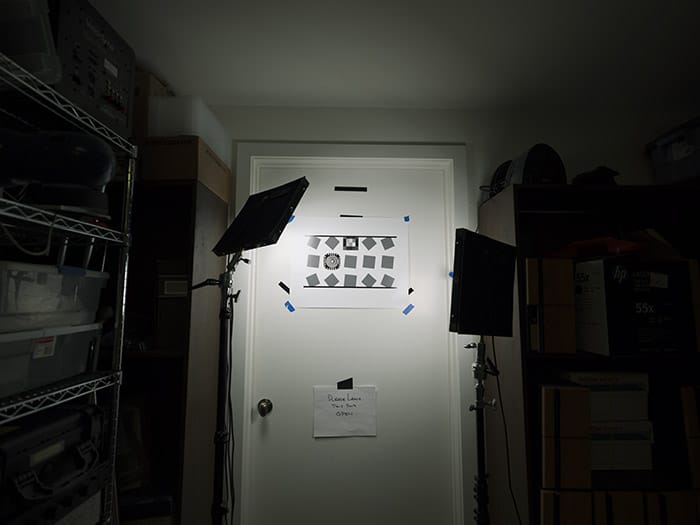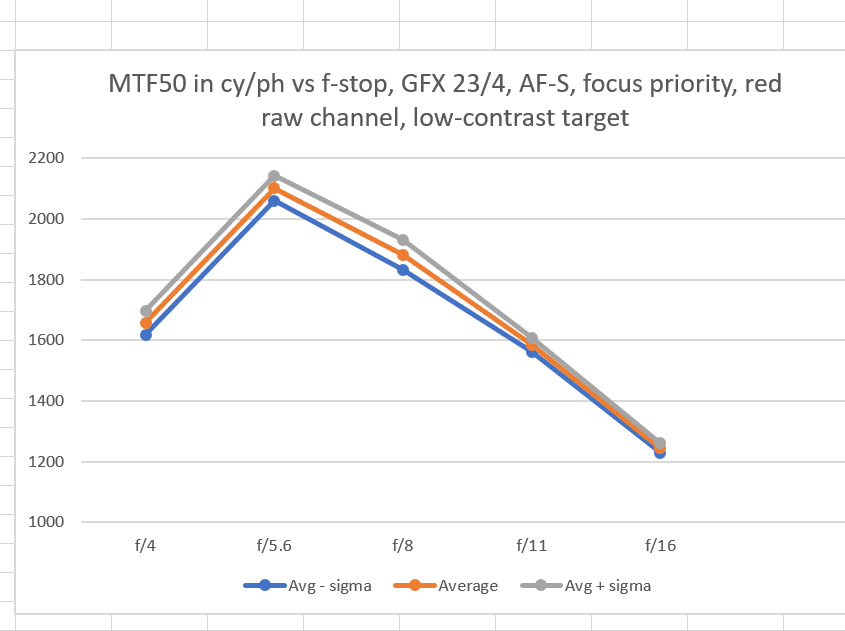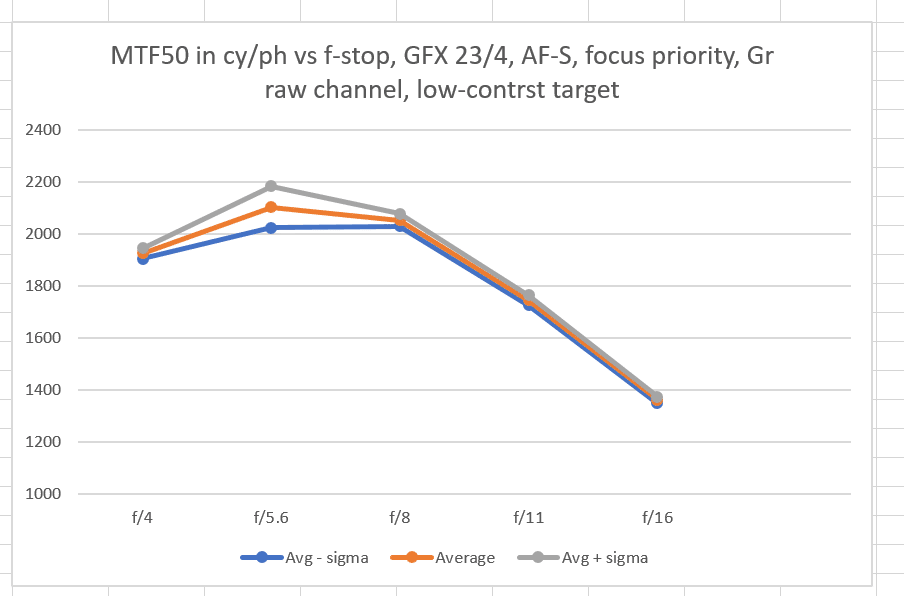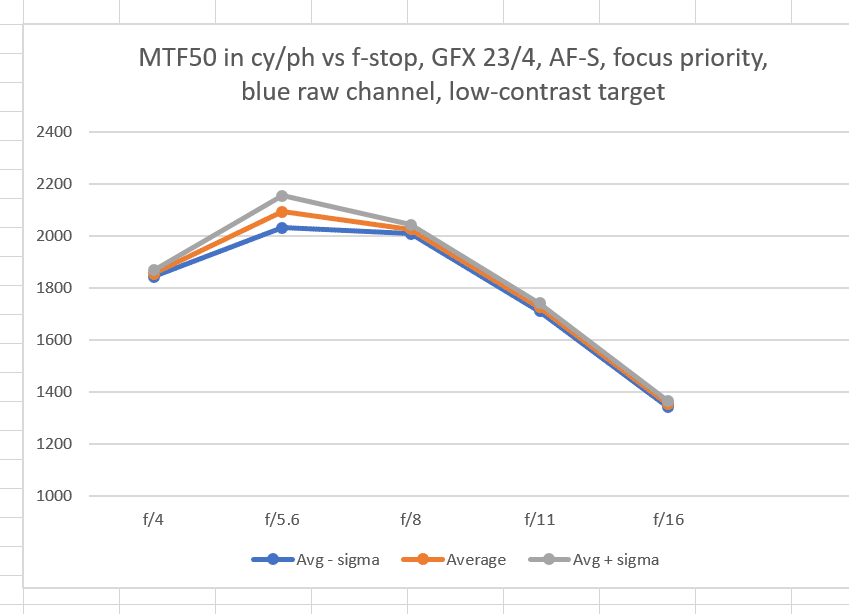This is the 64th in a series of posts on the Fujifilm GFX-50S. The series starts here.
Yesterday I reported on longitudinal chromatic aberration (LoCA) and focus shift with the Fuji 23 mm f/4 lens on the GFX 50S. I found the focus shift to be minimal, and the LoCA about average for a high-quality lens. Now I’m going to do a test of autofocus accuracy, using the same target as yesterday, but from a much greater distance, 2 meters. This is as far away as I cant get from this particular target and still have enough pixels to so the sharpness analysis accurately. Of course, I could print a bigger target and get further away, but I think 2 meters is far enough to get the measure of the lens in its comfort zone.
I used the bottom of the central slanted square, and the AF area covered that and the zone plate to the left. The details:
- ISO 100
- AF-S
- Release priority: focus
- Manual exposure
- Wescott LED panels set to 5500 K.
- EFCS
- Cognisys computer-driven focusing rail
- 51 exposures 1.6 mm apart
- Target distance at the center of the rial, 2 m.
- RAF converted to DNG in Adobe DNG Converter
- DNG exported as TIFF mosaiced file in dcraw (document mode)
- TIFFs cropped and raw channels selected in Matlab program
- MTF50 of cropped TIFFs measured with MTF Mapper
- Data assembled in Matlab
- Data plotted in Excel
The results, for each raw channel:
The vertical axis is MTF50, measured in cycles per picture height (cy/ph). I plotted the average of the 32 images, the average plus the standard deviation (aka sigma), and the average minus sigma.
These results are far more consistent than I saw with the Fuji 63 mm f/2.8 lens. They are more consistent than I saw with the Fuji 120 mm f/4 macro lens.
How do these results compare to manual focusing? I made a series of images with the lens set at a constant focus distance and the camera on the rail.
- At f/4, the green channel peak was 2000 cy/ph, as compared to and average of 1950 cy/ph using AF. I call that a wash.
- At f/5.6, the best MF green MTF50 was 2500 cy/ph. Autofocus fell well short of that, with an average of 2100 cy/ph. The best out of 50 shots was 2250 cy/ph. That is very good performance, but you can do better using manual focusing.
- At f/8, the best manual focus image was 2200 cy/ph. The AF average result is only 100 cy/ph less than that, an inconsequential difference.
- At f/11, you can get to 1800 cy/ph focusing manually, and AF gives you an average of only 50 cy/ph less than that.
Some caveats:
- This is an easy target for contrast-detection autofocus (CDAF) cameras like the GFX.
- It would take you many tries to get the manual focusing nailed the way you can with a computer controlled rail.
- The camera might do better — or worse — at other distances.
- As I said in yesterday’s post, don’t compare the absolute sharpness reported here with that in the 63 and 120 macro tests, where I used a different target that produces higher numbers.
This is top-notch performance at all apertures save f/5.6. It’s not bad at f/5.6, but it’s probably worthwhile to use manual focusing at that aperture if conditions permit. It is a little disappointing that all three lenses that I’ve tested, the 23, 63, and 120, all show their worst AF performance at their best f-stops.




[…] this post, I reported on Fuji GFX 50S systematic autofocus errors at certain f-stops (mostly one, […]